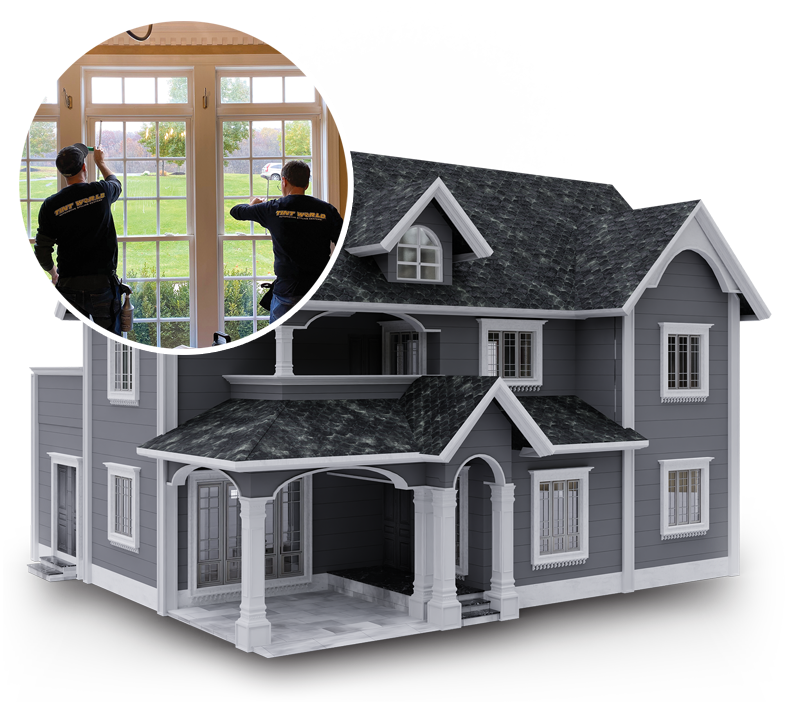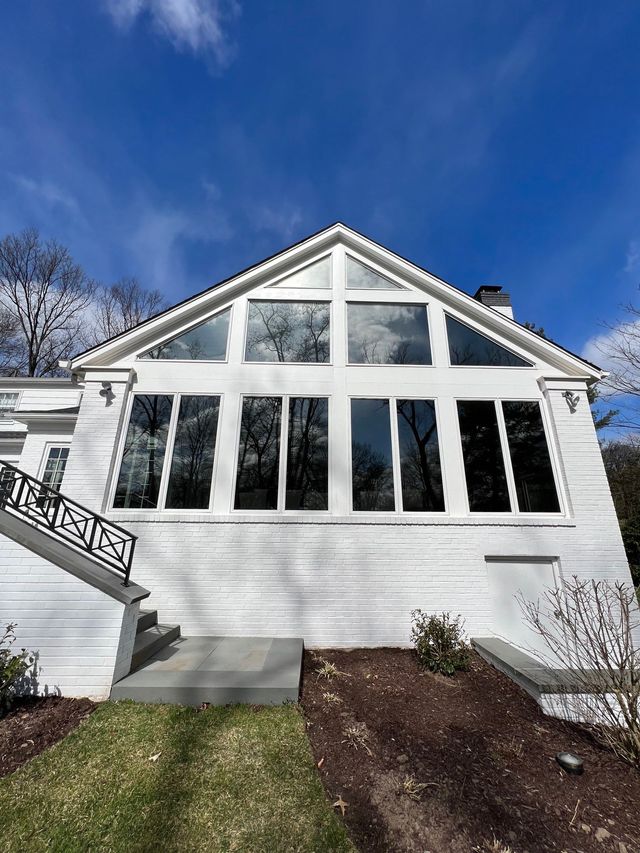Get Expert Advice on Picking the most effective Residential Window Tint for Your Requirements
Get Expert Advice on Picking the most effective Residential Window Tint for Your Requirements
Blog Article
How Residential Window Tinting Enhances Your Home's Power Efficiency
Residential home window tinting presents a compelling service for home owners seeking to enhance energy effectiveness within their living rooms. By using specialized movies to windows, it successfully minimizes warm transfer, therefore supporting indoor temperatures and lessening the requirement for too much heating or air conditioning. This not just stops power usage yet additionally gives a much more comfortable atmosphere by minimizing glare. Understanding the subtleties of how tinting jobs and selecting the proper kind for your home can be pivotal. Strangely enough, what variables should one think about prior to making this financial investment?
Recognizing Home Window Tinting
Understanding window tinting is vital for homeowners looking for to enhance both comfort and energy effectiveness in their space. Residential Window Tint. Window tinting involves the application of a thin film to the interior or outside surface of glass home windows. This film can substantially regulate the quantity of sunlight and warm that goes into a home, therefore influencing indoor environment conditions
There are different sorts of window tinting films readily available, each with distinctive homes. As an example, dyed movies soak up solar power, while reflective films disperse it far from the glass surface. Ceramic films use an equilibrium of visibility and heat rejection, making them a popular option among property owners. The efficiency of window tinting is often determined by its Visible Light Transmission (VLT) percent, which shows just how much light can pass with the film.
Benefits of Power Effectiveness
Home window tinting not only boosts aesthetics yet likewise plays a significant duty in enhancing power effectiveness within residential spaces. By reducing warm transfer through windows, colored films create an extra stable interior environment, which can result in substantial decreases in energy usage for heating & cooling. This power efficiency equates into reduced utility expenses, giving property owners with considerable lasting savings.

Additionally, home window tinting improves the comfort of living rooms. By lessening glow and blocking dangerous UV rays, colored home windows create a more positive setting, which can result in enhanced health for residents. The defense versus UV rays likewise helps maintain furniture and flooring from fading, adding to the longevity of home items.
Just How Tinting Works
Tinting movies operate via a combination of advanced products and modern technologies made to manage the quantity of solar energy getting in a home. Mainly made up of polyester, these films commonly incorporate ceramic or metal bits that mirror and absorb heat. This double capability enables them to significantly minimize the infiltration of ultraviolet (UV) rays and infrared radiation while allowing visible light to go through.
The performance of window tinting is determined by its solar warmth gain coefficient (SHGC), which shows just how much solar power is transmitted with the home window. Reduced SHGC worths are preferable as they signify better heat being rejected. Furthermore, home window tints can feature a selection of tones, enabling homeowners to personalize their visual choices while boosting power efficiency.
Moreover, these movies act as a barrier, avoiding heat loss throughout cooler months by reflecting interior warmth back into the home. This thermal insulation impact matches the air conditioning advantages obtained throughout warmer months, adding to a balanced indoor climate year-round. By handling solar power successfully, property home window tinting not just enhances comfort but also plays an essential duty in lowering power intake and decreasing energy bills.
Selecting the Right Color

There are various sorts of home window films offered, including dyed, metalized, and ceramic. Colored movies are affordable yet may have limited toughness. Metalized films use far better heat being rejected yet can conflict with electronic signals. Ceramic films give excellent warm control without endangering visibility and are very durable, making them a prominent option.
Visible light transmission (VLT) is one more critical factor, as it indicates the amount of all-natural light that can pass through the tinted glass. House owners must pick a tint with a VLT that enhances their lights choices while still giving ample glow decrease.
In addition, assessing the solar heat gain coefficient (SHGC) can help determine how well a color can obstruct warm from sunlight. A lower SHGC indicates much better warmth control, eventually boosting power effectiveness.
Setup and Maintenance Tips
Correct installation and upkeep are vital elements in optimizing the benefits of residential home window tinting. To accomplish optimum outcomes, it is recommended to work with a qualified professional for installment. This guarantees that the color is applied appropriately, staying clear of air bubbles, wrinkles, or imbalance that might compromise efficiency. Professionals likewise use specialized devices and methods, which can boost the toughness and effectiveness of the tint.
Following installation, maintenance is vital to lengthen the life of the window film. It is suggested to wait at least check my blog 30 days before cleaning up the tinted home windows to allow the glue to cure fully.
Furthermore, normal evaluations are useful. Look for any kind of peeling or bubbling, which can show inappropriate installation or wear in time - Residential Window Tint. Attending to these issues immediately can prevent additional damages and maintain energy performance. By adhering to these setup and upkeep tips, property owners can ensure their window tinting continues to provide substantial energy cost savings and comfort for years to come.
Final Thought
In conclusion, residential home window tinting works as an efficient solution for boosting energy efficiency within homes. By lowering warm transfer and blocking hazardous UV rays, home window films add to reduce energy usage and boosted interior comfort. The option of pop over here suitable tinting products, together with correct installation and upkeep, even more optimizes these benefits. Eventually, window tinting represents a sustainable financial investment that not only decreases utility costs but likewise advertises a comfortable living setting throughout the year.
Home window tinting entails the application of a thin film to the inside or outside surface of glass windows. By lowering warm transfer via windows, tinted films produce a much more secure interior climate, which can lead to considerable decreases in power intake for heating and air conditioning.The performance of home window tinting is measured by its solar heat gain coefficient (SHGC), which suggests exactly how much solar power is transmitted through the window. By handling solar power properly, residential window tinting not only improves comfort however likewise plays an essential about his role in decreasing energy usage and reducing utility expenses.
By minimizing warmth transfer and obstructing harmful UV rays, window films contribute to decrease power consumption and improved interior convenience.
Report this page